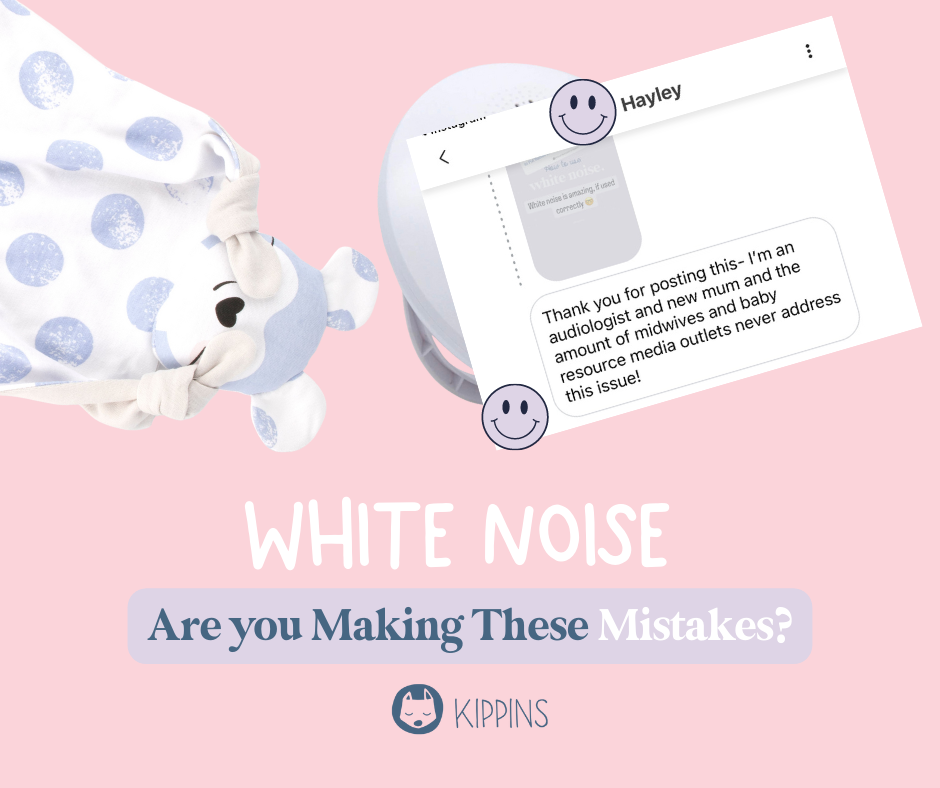White noise: Are You Using it Correctly?

White noise can be an amazing tool to help your baby get to sleep, and it's a great option for naps on the go, or unfamiliar environments. Use it incorrectly, however, and it can have huge impacts on your baby's hearing and sleep patterns. Learn more below!
Have you heard the sound of the womb from your ultrasounds? It's pretty noisy! It's one of the reasons why babies don't need a silent sleep environment, and in fact, some noise can actually assist them in falling asleep and staying there.
White noise is a broadband sound (a sound covering all frequencies of sound in equal measure) that is often likened to the static coming from your TV. It can act to 'fill in' sound space and soften 'big' sounds like slamming doors and barking dogs.
There are loads of white noise options on the market that claim to assist babies in falling asleep and staying there, from mechanical toys and 'sleep gadgets' with white noise components to stand alone white noise machines with all the bells and whistles.
But, not all white noise is created equal. Here are our top tips for the safe use of white noise as a sleep aid for your baby.
1. The source of the white noise should be at least 1.5m from your baby's ears.
This is a big one - babies have very sensitive ears. Extended use of white noise at unacceptable levels can cause hearing loss over time.
This is from our friends at Healthline:
In 2014, the American Academy of Pediatrics (AAP) tested 14 white noise machines designed for infants.
The study concluded that regular exposure to sound pressure levels may be damaging to infant hearing and auditory development.
2. White noise should not exceed 50 decibels.
It's important that your white noise machine comes with an adjustable volume so that you can alter the level of sound according to how close it is to your baby. This will change depending on where your baby is going to sleep - e.g. if they're going to sleep in a new environment.
The AAP study linked above found that most products on the market exceed these levels.
3. The white noise should be continuous.
Many people will report 'instant' and magical effects of white noise on their baby's sleep - particularly newborn babies. It's no surprise - the soothing sounds will usually lull even the most difficult babies into a nap. However, those babies who fall asleep easily shortly become catnapping experts. The very white noise that has lulled them to sleep is suddenly G O N E. It means that parents who have purchased the newest 'white noise toy' will be finding themselves 'restarting' it every 20-40 mins to help assist their baby back to sleep. They may find that they have, in fact, simply purchased a highly irritating and expensive, simple plush toy - and that they then need to purchase multiples of this toy to maintain Blankie hygiene. Speak to parents who have given raving reviews after a short period a few months down the track, and you'll find it's a different story.
Why don't Kippins include a white noise machine?
Put simply, our Founder just wasn't comfortable with the idea of having a battery operated noise machine in a toy in her baby's cot. But further to that, the key role of a Sleep Toy is as a transitional object that baby uses as a tactile friend to soothe themselves to sleep - not as a magic baby sleep machine. The 'white noise' element to most of these gadgets is arbitrary and secondary for the reasons we've outlined above. Instead, we've chosen to focus on what makes the ultimate, simplest and safest sleep toy for babe by using premium materials and organic cotton.
Have any questions about White Noise? Our Sleep Experts are here to help - send us a DM, email us, or pop into our store chat!

